I went on a little adventure with my daughter, her friend, my dog and my lover. This cool little adventure took us under roads, through the forest, over creeks, up a mountain, through the snow and into dark tunnels. During this adventure we encountered many obstacles like ice, boulders, fences and downed trees, etc…. This definitely made for some interesting moments that left us on our butts or trying to figure out a way around the hurdle. Each time we fell on the ice we picked ourselves back up, each time we hit a bump or barrier along our path, we figured out a safe way around and/or through. No matter what, we kept going because we knew whatever was around the next corner it was sure to be interesting and beautiful…and it was! It was a great day!
When I came home and reflected on my awesome day it reminded me that my nature infused adventures are similar to my business building experience. While the backdrop is very different the feelings, the emotions and mentality of it was similar.
7 reasons why a hike in nature is similar to starting your own business!
- Preparing:
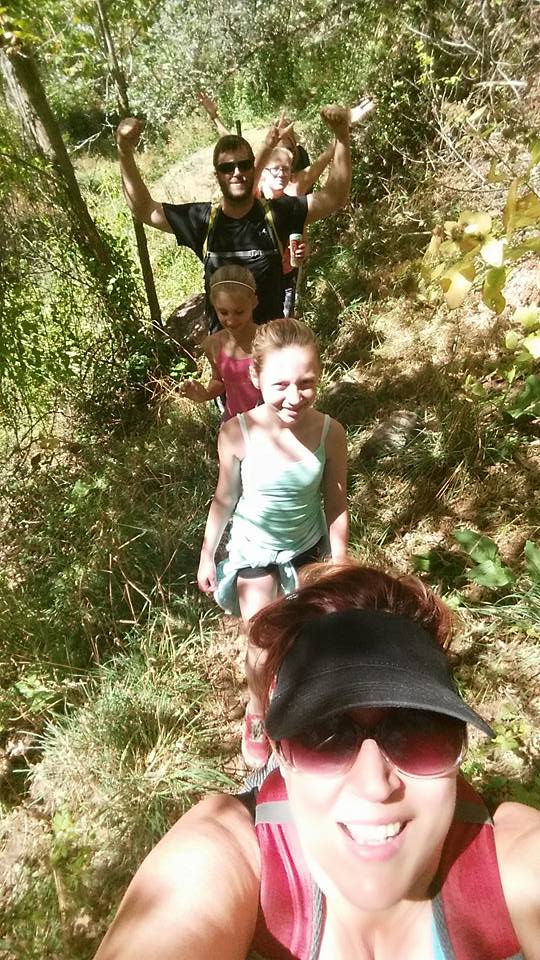 When starting any new adventure you always have some sort of destination in mind. Preparation is a key component to your journey. For instance, when you go on a day hike you need to be sure to have all the necessities, like water, snacks, proper attire and a fairly clear idea what your route will look like and what your time frame will be.
When starting any new adventure you always have some sort of destination in mind. Preparation is a key component to your journey. For instance, when you go on a day hike you need to be sure to have all the necessities, like water, snacks, proper attire and a fairly clear idea what your route will look like and what your time frame will be.
Building your business is quite similar. You need to have an idea, a business plan, a blueprint and the right tools to help you get to your goal in the timeframe you desire. Evaluate your goals; understand what it takes to start a business not only from a financial stand point, but also from an emotional, mental and physical stand point as well. There is so much heart and soul you will pour into your business and being as prepared as possible is truly in your best interest. Furthermore, educate yourself on the legalities of starting your own business and seek legal and financial consultation should you need it. Sometimes it is easier to work with a professional that can tell you right away the answers you seek, rather than spending weeks trying to figure it out on your own.
- Getting Started:

A journey of a thousand miles (or even just 2 miles) starts with a single step. Building your business is like starting a hike. When you arrive at the trail head you know that there will be many miles between you and your destination. Excitement and sometimes fear will be an emotion you will feel as you embark on the path to your destination. A hike, depending on your level of fitness and how steep the climb is, you will stop to catch your breath or stop to rest your legs.
Your business is no different. You will meet goals, stop to catch your breath, regroup and then keep going. If you are unsure where to start with your business I suggest that you start by carving out time each and every day to work on your business. This can be as simple as doing research on the internet, reading blogs, finding a community online to bounce ideas off of, or seek mentorship and coaching. I also suggest that you invest in this journey and if you are someone that can learn online, purchase a training course that will help you get started. This is nice because it can save you time and also take a lot of guess work out of it for you. Your time is precious, so be sure to seek help where help in needed! Your family and friends will appreciate this too.
- Finding Your Buddies and Support System:
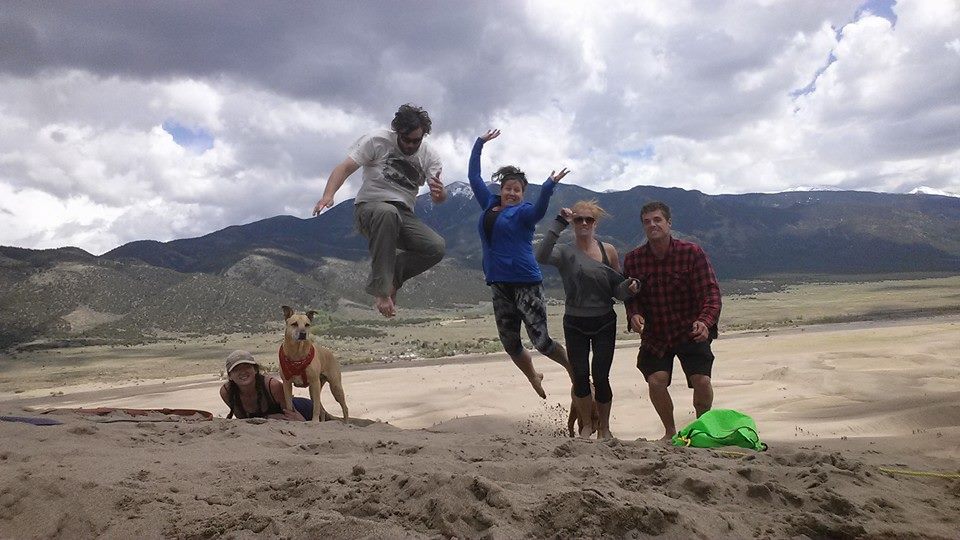 Not only is it fun, but it is also super smart to never hike alone. Hiking with friends or family is an enjoyable experience and can help keep you safe. In nature there are many things that could go wrong. Wildlife encounters, inclement weather and even the risk of injury. So having a buddy can lessen the burden should something negative happen. Plus on the fun side, you will build memories together; you can share stories and most importantly someone to encourage you should you feel too tired or weak to keep going.
Not only is it fun, but it is also super smart to never hike alone. Hiking with friends or family is an enjoyable experience and can help keep you safe. In nature there are many things that could go wrong. Wildlife encounters, inclement weather and even the risk of injury. So having a buddy can lessen the burden should something negative happen. Plus on the fun side, you will build memories together; you can share stories and most importantly someone to encourage you should you feel too tired or weak to keep going.
Here is a little secret, your support system when you are building your business is one of the secret sauces to your success. I can’t express how much you need to have your support system in place when you decide to embark on this epic entrepreneurial journey. Your support system is the people that will pick you up when you have fallen; these are the people who will cheer you on when you feel like giving up. These are the people who will gather around you to celebrate your goals when you have accomplished them. Business is hard, it can be a lonely place with lots of hurdles along the way, but with a support system by your side anything can be possible.
- Being Prepared to Weather Any Storm:
 In the mountains of Colorado (where I live) the weather can change in a matter of minutes. It can be sunny and beautiful, then within an hour it could be thunder snowing. You have to be prepared to weather any storm in the mountains. So, as you embark on this epic metaphorical hike of building your business you should remember that the seasons of success will change.
In the mountains of Colorado (where I live) the weather can change in a matter of minutes. It can be sunny and beautiful, then within an hour it could be thunder snowing. You have to be prepared to weather any storm in the mountains. So, as you embark on this epic metaphorical hike of building your business you should remember that the seasons of success will change.
What does seasons of success mean? As counter intuitive as it may sound, success is temporary! But so is failure. As a veteran online business owner that has helped thousands of businesses build their online presence, I have weathered many storms along the way. Every time I feel defeated or elated, I center myself and understand that it is only a temporary feeling.
I share this not to deter you, but rather to prepare you. Success is a crazy rollercoaster and truly is not for the faint of heart. Tenacity pays off. Consistency pays off. Failure pays off. One day you may feel like giving up, another day you may feel like you’re the master of your universe. Don’t give up; remember the seasons of success will change and every great leader in all industries have experienced it. Remember the master once was the beginner… trust your journey!
- Embracing and Enjoying the Journey:
 Nobody said it was going to be easy…they said it would be worth it. Let it be a mountain in front of you or starting your business building journey, one thing is for certain, it will surely be an interesting adventure and journey.
Nobody said it was going to be easy…they said it would be worth it. Let it be a mountain in front of you or starting your business building journey, one thing is for certain, it will surely be an interesting adventure and journey.
In the fast paced world that we live in we tend to focus on what we lack or do not have, rather than celebrating the things we do. There will be many days you will find yourself focusing how far you have to go or what you have not accomplished yet. You may beat yourself up about the training you still need, or how your website may not operate perfectly or that you don’t have enough social media followers. It is so easy to focus your energy on what you haven’t done that you forget to embrace exactly where you are right now.
The entire journey is worth embracing, everything from the trials and errors, to the huge accomplishments along the way. Each step you take and each twist and turn or achievement that you encounter on this path is put there to either help you grow, help you learn or help you put everything into perspective. Success is by no means a straight line, but rather full of turns, bumps, sharp curves and more. Allowing yourself to embrace its every last drop, is a true gift you can give to yourself, but to say that it comes easy would be a lie, but oh so worth it!
- Celebrating Along the Way:
 What is all the hard work without reward? For some the hike to the summit is the reward that they feel is enough, the breathtaking views, the sense of accomplishment, the burn in their calves. Or maybe you have plans to get an amazing meal or a big tasty beer as soon as you return back to town. I remember, I did a huge and brutal 15 mile hike a few years back and I knew that my reward was going to be a gigantic class of ice water when I returned to town. When I got it I was in heaven and cherished every last cold delicious gulp.
What is all the hard work without reward? For some the hike to the summit is the reward that they feel is enough, the breathtaking views, the sense of accomplishment, the burn in their calves. Or maybe you have plans to get an amazing meal or a big tasty beer as soon as you return back to town. I remember, I did a huge and brutal 15 mile hike a few years back and I knew that my reward was going to be a gigantic class of ice water when I returned to town. When I got it I was in heaven and cherished every last cold delicious gulp.
It is no different with your business. Celebrate the big wins of course, but also celebrate the small wins too. All those small wins are just as important as that big goal that you accomplished. There is no way you can achieve a huge leap without a series of steps before it (unless you’re super(wo)man). Those steps are just as important as that moment you jump. Those steps before the leap should be celebrated just as much as the leap itself, because they were a huge reason you were able to make the leap to begin with.
With this same metaphor in mind, remember to celebrate all the steps that occur before whatever the big goal is that you plan to celebrate. I think the best advice one of my mentors ever gave me was “Until further notice celebrate everything!” So I give you the same sage advice… and to take it one step further, find something to celebrate every day. It could be you finished a blog you had been working on, or that you got 20 new likes on your Facebook business page, or you actually ate breakfast, or that you got to the gym before you started the day, whatever it might be, celebrate it in your own unique and happy way. Your mind, body, spirit and your family will thank you for it.
- Sharing your Adventure:
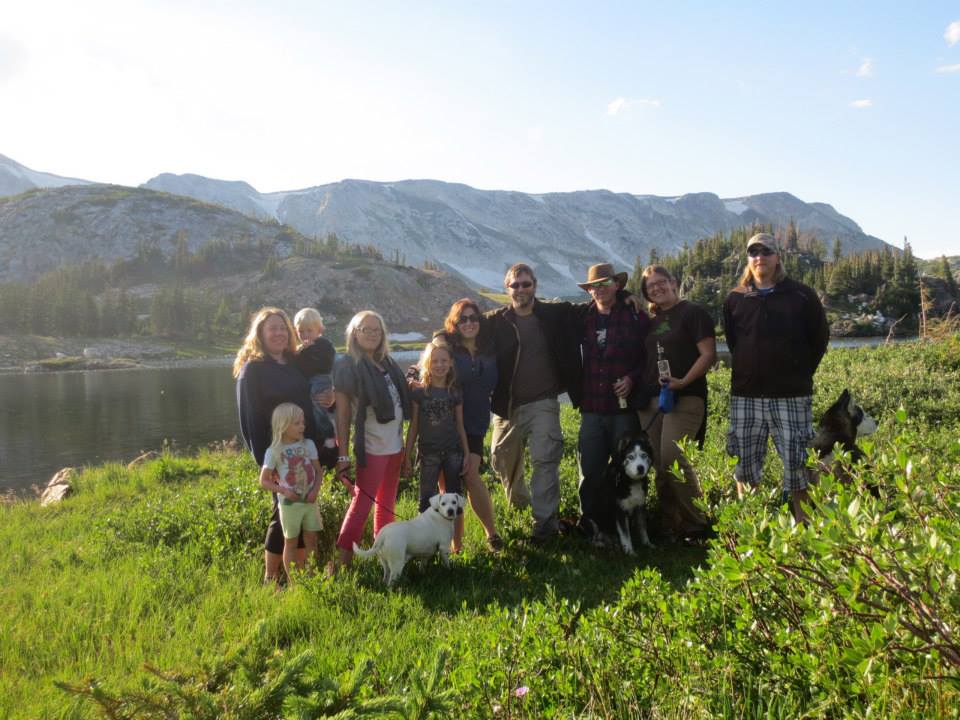 I know when I finish a hike, just like I did at the beginning of this blog, I looked forward to sharing it on my facebook and instagram pages with my family and friends. How lucky are we that we live in a time that we can do this with a few clicks of a mouse. With the magic of social media it is so much easier to share precious and adventurous moments.
I know when I finish a hike, just like I did at the beginning of this blog, I looked forward to sharing it on my facebook and instagram pages with my family and friends. How lucky are we that we live in a time that we can do this with a few clicks of a mouse. With the magic of social media it is so much easier to share precious and adventurous moments.
The same mindset should be applied for your business building journey too. Let it all hang out, the good, the bad, and the ugly. Honestly, when I am looking for inspiration in terms of business or my fitness goals, I never want to be shown the sweet and cute parts. I want to relate, I want to connect and have someone tell me “Yes! It is freaking hard sometimes, but keep going”. When you share your business building experience you have the ability to inspire others that maybe feel defeated or just needed a reminder. I promise your adventure will inspire someone else. There is always someone waiting to hear from you…even if they don’t know it yet.
In closing, remember business is very much like an adventure…where it leads us, we aren’t quite sure, but one thing we know it will be worth it. I highly suggest following your Entrepreneurial spirit down that rabbit hole… What you will find will be one of the best adventures of your life.
Remember, the master always started out as a beginner. One foot in front of the other…baby steps! Your story is bound to inspire someone and I hope that my story has inspired you too. Pass it on.
#Entrepreneur #OnlineBusiness


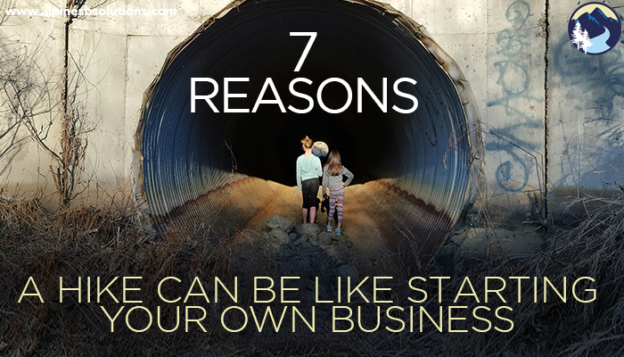

 Burnout feels awful. Awful enough to be a catalyst for promoting positive change. It can force you to change poor work habits (like working through lunch). Or cause you to reassess your priorities (like too much office time and not enough family time). Or even make you re-evaluate whether your current job or projects are what you should be doing.
Burnout feels awful. Awful enough to be a catalyst for promoting positive change. It can force you to change poor work habits (like working through lunch). Or cause you to reassess your priorities (like too much office time and not enough family time). Or even make you re-evaluate whether your current job or projects are what you should be doing. Aromatherapy involves inhaling essential oils (liquids from natural extracts like flowers and fruits). The scent interacts with our body, helping to cause benefits like improving your focus and stimulating your brain. One research study found that lavender and rosemary reduces cortisol levels (the hormone released in fight or flight mode that can be a big mental drain). Smelling certain oils can help give you the jolt of energy you need in a healthier way than turning to excessive caffeine.
Aromatherapy involves inhaling essential oils (liquids from natural extracts like flowers and fruits). The scent interacts with our body, helping to cause benefits like improving your focus and stimulating your brain. One research study found that lavender and rosemary reduces cortisol levels (the hormone released in fight or flight mode that can be a big mental drain). Smelling certain oils can help give you the jolt of energy you need in a healthier way than turning to excessive caffeine. Sometimes just writing down everything you need can help you
Sometimes just writing down everything you need can help you 
 Imposter syndrome is a term often thrown around and splashed in click baiting headlines, leaving people confused as to what it actually is (and whether they’re affected by it).
Imposter syndrome is a term often thrown around and splashed in click baiting headlines, leaving people confused as to what it actually is (and whether they’re affected by it). Imposter syndrome is the little troll on our shoulder feeding us lies about our potential. It keeps us from being the best
Imposter syndrome is the little troll on our shoulder feeding us lies about our potential. It keeps us from being the best  It’s okay to celebrate and take pride in your success. In fact, it’s important for your confidence’s sake to view your success accurately. (That means recognizing the role your ability and
It’s okay to celebrate and take pride in your success. In fact, it’s important for your confidence’s sake to view your success accurately. (That means recognizing the role your ability and  a list of more achievements to feel more confident. But, the problem with imposter syndrome isn’t a lack of success (since it happens with people who are very successful). It’s not being able to internalize accurately those successes. Imposter syndrome won’t go away with more success.
a list of more achievements to feel more confident. But, the problem with imposter syndrome isn’t a lack of success (since it happens with people who are very successful). It’s not being able to internalize accurately those successes. Imposter syndrome won’t go away with more success.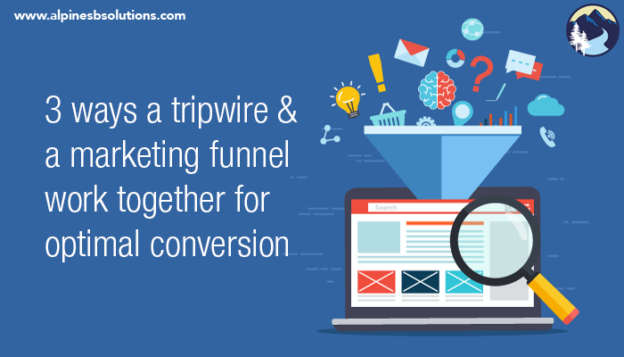
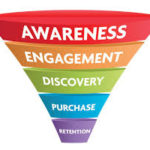 Marketers use tools to nurture leads along each stage of the funnel. Visitors to your site can give their email in exchange for a free downloadable guide (gaining awareness). A follow-up email gives them a curated list of relevant blog articles on the site (gaining interest). A follow-up email to that gives them a case study showing the benefits of your products/services (gaining desire). A follow-up email to that gives them a coupon to buy your products/services (taking action).
Marketers use tools to nurture leads along each stage of the funnel. Visitors to your site can give their email in exchange for a free downloadable guide (gaining awareness). A follow-up email gives them a curated list of relevant blog articles on the site (gaining interest). A follow-up email to that gives them a case study showing the benefits of your products/services (gaining desire). A follow-up email to that gives them a coupon to buy your products/services (taking action). they need to know it exists. Insert the marketing funnel! You can use the marketing funnel to direct people to the end action: acting on the trip wire. Social media, blog posts, emails can all give that push towards buying the trip wire. Not everyone will make it from gaining awareness to making that purchase. But strategic marketing can help get more people to that purchasing point.
they need to know it exists. Insert the marketing funnel! You can use the marketing funnel to direct people to the end action: acting on the trip wire. Social media, blog posts, emails can all give that push towards buying the trip wire. Not everyone will make it from gaining awareness to making that purchase. But strategic marketing can help get more people to that purchasing point.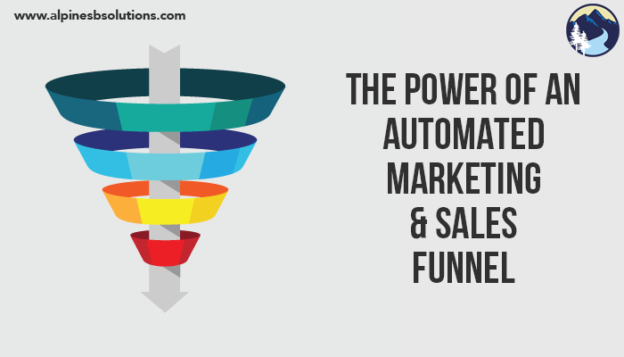
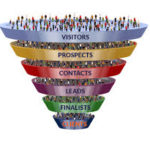 You’ve probably heard this phrase before. Many, many, many times I imagine. Let’s quickly debrief anyway.
You’ve probably heard this phrase before. Many, many, many times I imagine. Let’s quickly debrief anyway. Automation, when done well, can be a marketer’s best friend. First of all, it saves you an immense amount of time. Instead of you sitting down to individually send an email to people at each stage of the funnel, these emails can be sent automatically.
Automation, when done well, can be a marketer’s best friend. First of all, it saves you an immense amount of time. Instead of you sitting down to individually send an email to people at each stage of the funnel, these emails can be sent automatically. attention (since that “unsubscribe button” is all too easy to press). Send a follow-up email to those who subscribed giving them more helpful information. Nothing sales-y here either! The goal is to intrigue your audience about your brand by showing you know your stuff. Send an email with a round-up of useful articles on the given topic. Share valuable resources. Prove that your emails (and your company) offer value.
attention (since that “unsubscribe button” is all too easy to press). Send a follow-up email to those who subscribed giving them more helpful information. Nothing sales-y here either! The goal is to intrigue your audience about your brand by showing you know your stuff. Send an email with a round-up of useful articles on the given topic. Share valuable resources. Prove that your emails (and your company) offer value.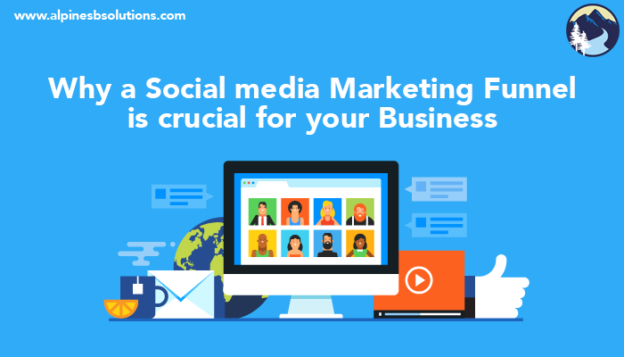
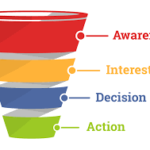 The “
The “ When you create a social media sales funnel, you supercharge your
When you create a social media sales funnel, you supercharge your  Once you know which channels to be on, you can work on generating that awareness. Facebook ads, for example, can help potential customers discover your page. When applicable, tag other organizations in your posts to help your posts show up on their followers’ pages. Cross promote your social channels through strategies like including the social links in your email signatures or newsletters.
Once you know which channels to be on, you can work on generating that awareness. Facebook ads, for example, can help potential customers discover your page. When applicable, tag other organizations in your posts to help your posts show up on their followers’ pages. Cross promote your social channels through strategies like including the social links in your email signatures or newsletters.
 You can’t find the perfect candidate if you don’t know what the perfect candidate looks like. Start off by figuring out what tasks you need accomplished (hint: you can use our
You can’t find the perfect candidate if you don’t know what the perfect candidate looks like. Start off by figuring out what tasks you need accomplished (hint: you can use our  Once you’ve got a clear picture of what you need, you can start spreading the word that you’re looking for a new virtual assistant. You’ll need to create a clear job listing that details everything you need (i.e. everything from step one). Include something quirky to make sure the person actually reads your listing and can follow directions (for example, asking candidates to mention their favorite movie in the last paragraph to ensure they aren’t just mass posting an application).
Once you’ve got a clear picture of what you need, you can start spreading the word that you’re looking for a new virtual assistant. You’ll need to create a clear job listing that details everything you need (i.e. everything from step one). Include something quirky to make sure the person actually reads your listing and can follow directions (for example, asking candidates to mention their favorite movie in the last paragraph to ensure they aren’t just mass posting an application). Ask candidates for a resume, references, and work samples to ensure their experience and work is up to your standard. Conduct an in-person or webcam interview to get a feel for them beyond their application. It’ll allow you to get a glimpse into their work setting, their fluency of English, their personality, their energy, and all the other intangibles that play a role into how they will fit into your organization. Even though they won’t be coming into the office, it’s important to be sure that their
Ask candidates for a resume, references, and work samples to ensure their experience and work is up to your standard. Conduct an in-person or webcam interview to get a feel for them beyond their application. It’ll allow you to get a glimpse into their work setting, their fluency of English, their personality, their energy, and all the other intangibles that play a role into how they will fit into your organization. Even though they won’t be coming into the office, it’s important to be sure that their
 Imposter syndrome is often confused with a few other things, so let’s clear that up right now. Imposter syndrome is not humility (which is an accurate view saying your worth isn’t more than someone else). Imposter syndrome is a warped and false view of your “lack” of
Imposter syndrome is often confused with a few other things, so let’s clear that up right now. Imposter syndrome is not humility (which is an accurate view saying your worth isn’t more than someone else). Imposter syndrome is a warped and false view of your “lack” of  It tells us we just got lucky. It wasn’t our hard work, talent, and ambition that got us that success. We just happened to be at the right place at the right time (which, by the way, is why you shouldn’t take a chance now because your luck may run out).
It tells us we just got lucky. It wasn’t our hard work, talent, and ambition that got us that success. We just happened to be at the right place at the right time (which, by the way, is why you shouldn’t take a chance now because your luck may run out). Don’t try to fix it with success. Sometimes people think the way to overcome imposter syndrome is to pursue more accomplishments. But, the underlying root of imposter syndrome is not being able to accurately internalize your own success and abilities. Simply piling on more success won’t do anything to make imposter syndrome go away.
Don’t try to fix it with success. Sometimes people think the way to overcome imposter syndrome is to pursue more accomplishments. But, the underlying root of imposter syndrome is not being able to accurately internalize your own success and abilities. Simply piling on more success won’t do anything to make imposter syndrome go away.
 you avoid too many keywords (which can make your profile a dry read). You really want to think about what your audience is looking for and write for that. Answer those questions, and use those words. Utilize a few strategies to establish the best keywords for you. First, brainstorm words and phrases likely to be searched by the individuals you want viewing your profile. Second, read through profiles of leaders in your target markets to find common keywords they use. Third, examine keywords used in job postings by your target employers. Integrate these keywords throughout your profile, from your specialties section to your link descriptions.
you avoid too many keywords (which can make your profile a dry read). You really want to think about what your audience is looking for and write for that. Answer those questions, and use those words. Utilize a few strategies to establish the best keywords for you. First, brainstorm words and phrases likely to be searched by the individuals you want viewing your profile. Second, read through profiles of leaders in your target markets to find common keywords they use. Third, examine keywords used in job postings by your target employers. Integrate these keywords throughout your profile, from your specialties section to your link descriptions. posting style (is it formal or casual?), structure of successful posts (do they tend to be questions or pieces of advice?), and length of posts and responses (are they usually short, medium, or long?). Getting a sense of the group’s dynamic will help you better craft responses, and in turn, see better engagement from group members. Find a few key groups in your industry and begin interacting regularly. Your regular contribution can turn into group members viewing your profile.
posting style (is it formal or casual?), structure of successful posts (do they tend to be questions or pieces of advice?), and length of posts and responses (are they usually short, medium, or long?). Getting a sense of the group’s dynamic will help you better craft responses, and in turn, see better engagement from group members. Find a few key groups in your industry and begin interacting regularly. Your regular contribution can turn into group members viewing your profile.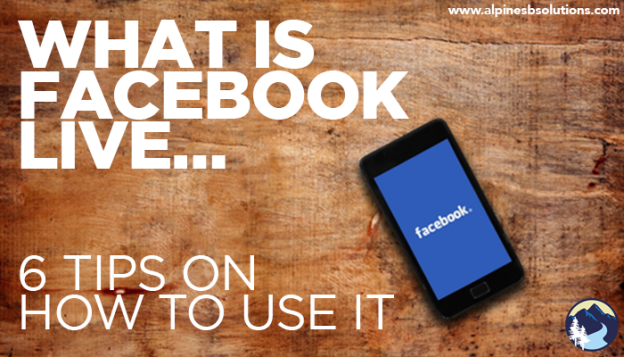
 7 Tips on How to Use Facebook Live
7 Tips on How to Use Facebook Live